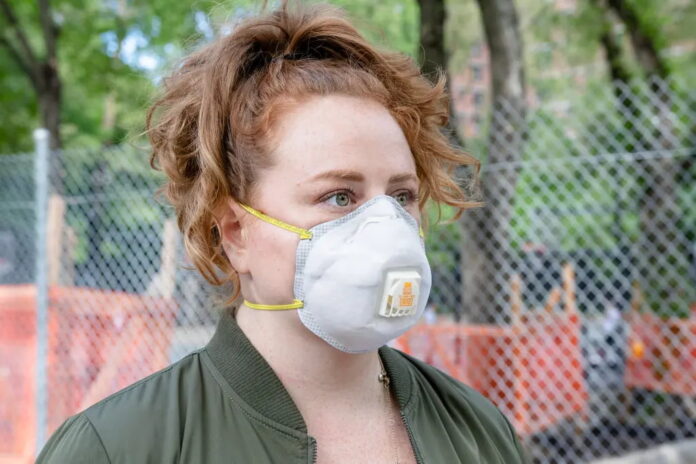Personal safety and protection have taken on a whole new level of importance in today’s world. With the increasing concerns about air quality, safety masks, and respirators have become crucial tools for safeguarding our health. These protective devices act as a shield, creating a barrier between our respiratory system and harmful particles in the air.
In this article, we will explore the significance of safety masks and respirators, their benefits, and the different types available.
What Are Safety Masks and Respirators, and Why Are They Important?
Safety masks and respirators are vital in filtering out airborne particles that can harm our health. Whether dust, allergens, pollutants, or even infectious agents like viruses and bacteria, these masks and respirators provide a layer of defense, preventing these particles from entering our respiratory system.
The benefits of wearing safety masks and respirators are numerous. Firstly, they act as a physical barrier, reducing the risk of inhaling harmful particles into our lungs. When we breathe, we can unknowingly inhale various particles in the air, some of which can cause respiratory issues and other health problems. Safety masks and respirators filter out these particles, ensuring the air we breathe is cleaner and safer.
Secondly, safety masks and respirators play a critical role in preventing the transmission of respiratory infections. In the case of contagious diseases like COVID-19 or the flu, these infections primarily spread through respiratory droplets expelled when an infected person coughs, sneezes, or talks. Wearing a mask helps to contain these droplets, reducing the chances of them being released into the environment and minimizing the risk of infecting others.
What Are the Most Common Safety Masks and Respirators?
With a wide variety of options available, it’s important to understand the most common types of safety masks and respirators and their specific purposes.
In this section, we will explore the most prevalent options that you are likely to encounter.
1- Cloth masks. These masks are typically made from a soft, breathable fabric such as cotton. While they may not offer the same level of filtration as other types of masks, they still provide a valuable barrier, particularly in reducing the spread of respiratory droplets. Cloth masks are suitable for everyday use and can be reused after washing, making them a cost-effective and sustainable choice.
2- Surgical masks. These loose-fitting, disposable masks are commonly used in healthcare settings. They are designed to prevent large respiratory droplets and splashes from reaching the wearer’s nose and mouth. Surgical masks also help in reducing the transmission of respiratory infections to others. They are widely available and offer a higher level of filtration than cloth masks, making them a popular choice in various environments.
3- N95 respirators. These respirators are highly effective in filtering out airborne particles, including small respiratory droplets. N95 respirators provide a close facial fit and offer a high level of filtration efficiency, filtering out at least 95% of airborne particles. They are widely used in healthcare settings and in environments where there is a high risk of exposure to hazardous particles, such as construction sites and industrial settings. These respirators create a tight seal against the face, ensuring the air we breathe is filtered and clean. They are considered air-purifying respirator masks due to their efficient filtration system.
4- P100 Respirators. P100 respirators offer the highest level of filtration among respirators commonly available to the general public. These respirators are capable of filtering out 99.97% of airborne particles, including both solid particles and oil-based aerosols. P100 respirators are often used in environments with higher levels of respiratory hazards, such as construction sites, chemical plants, and manufacturing facilities. They provide excellent protection against fine particles, but it’s important to ensure a proper fit for optimal performance.
Choose the Best Safety Masks and Respirators
It’s worth noting that the choice of safety masks and respirators depends on the specific needs of the individual and the environment they are in. Factors such as filtration efficiency, fit, comfort, and the level of respiratory hazard should be considered when selecting the appropriate option.
Read Also
- Ketamine-Assisted Therapies: Impacts on Employee WellbeingWorkplace stress is common today. Many employees feel tired, anxious, or burned out. Regular therapy can help, but some people need more support. Ketamine-assisted therapy is showing good results for mental health. A ketamine-assisted therapist guides each session safely. This therapy can improve mood, focus, and energy. Learning more about it can help teams stay… Read more: Ketamine-Assisted Therapies: Impacts on Employee Wellbeing
- The Future of Men’s Health: Why Telehealth Is Here to StayTelehealth isn’t just a pandemic trend that faded into the background. For Australian men, it has become one of the most practical, time-saving, and stress-free ways to manage everyday health — and it’s shaping the future of how we access care. Platforms like DOCTO, an Australian online doctor and specialist telehealth service, are leading the… Read more: The Future of Men’s Health: Why Telehealth Is Here to Stay
- How to Build a Simple, Clean Skincare Routine ?You don’t need a complicated skincare routine. It doesn’t have to be something that requires twenty different products and confusing steps. Your routine works well with just a few high-quality clean ingredients. The beauty industry keeps pushing more products, but your skin actually needs less. You only need a simple approach to get better results… Read more: How to Build a Simple, Clean Skincare Routine ?
- How Preventive Dental Care Supports Overall HealthHave you ever wondered how a simple dental checkup could impact your entire body? Oral health is more than just a bright smile. Studies show that poor dental habits can contribute to serious health problems. Gum disease and tooth decay are linked to heart disease, diabetes, and infections. Yet, many people overlook preventive dental care.… Read more: How Preventive Dental Care Supports Overall Health
- Seeing Clearly in a High-Tech World: A Deep Dive into Advanced Vision Care ServicesProtecting your eyesight isn’t optional—it’s essential. Modern eye care has evolved far beyond basic exams, offering advanced diagnostics, personalized treatments, and surgical innovations that keep vision sharp for life. A leading example is Intermountain Eye Center, home to specialists like Dr Fishburn Boise, where patients receive comprehensive, high-level vision care designed to preserve long-term eye… Read more: Seeing Clearly in a High-Tech World: A Deep Dive into Advanced Vision Care Services
- Why the Keto Diet Works for Some People—and Fails Dramatically for Others: An Ayurvedic Breakdown for Modern HealthcareThe keto diet has dominated weight-loss culture for years. For some people, it produces rapid fat loss, stable energy, and improved mental clarity. For others—especially those who gain weight easily—it leads to burnout, digestive distress, rebound weight gain, high cholesterol, and a metabolism that feels slower than before. Healthcare often frames this as a discipline… Read more: Why the Keto Diet Works for Some People—and Fails Dramatically for Others: An Ayurvedic Breakdown for Modern Healthcare







